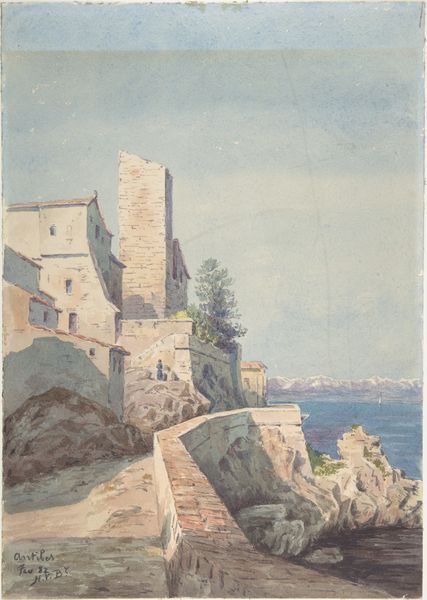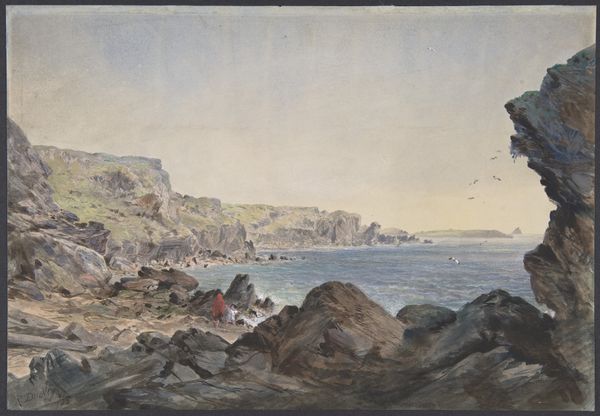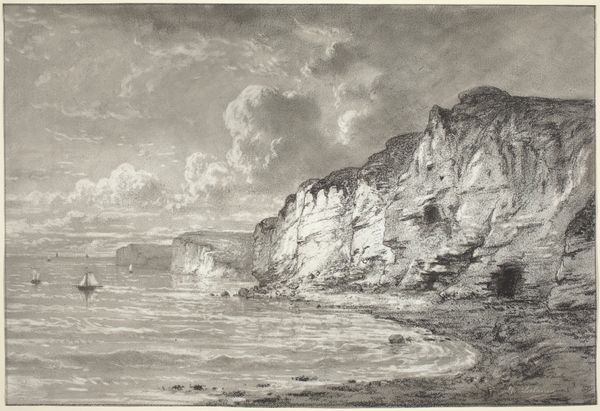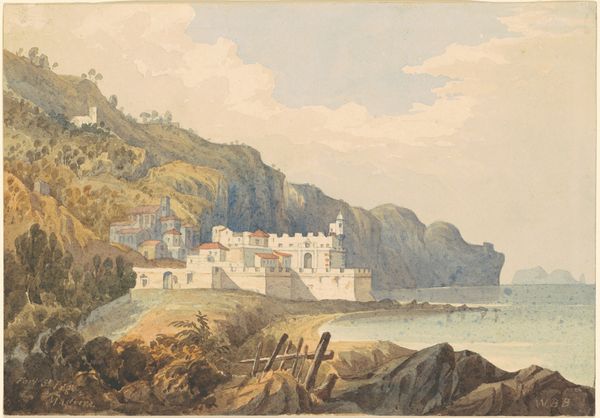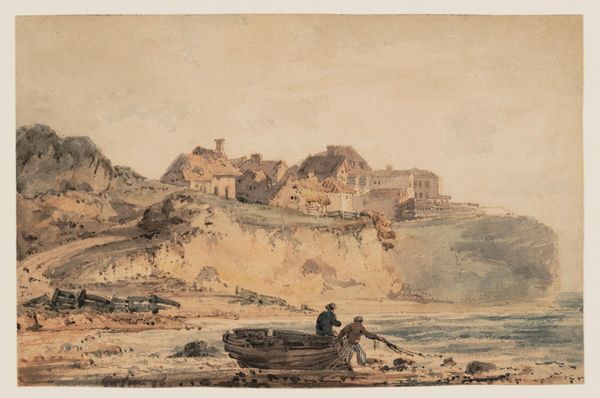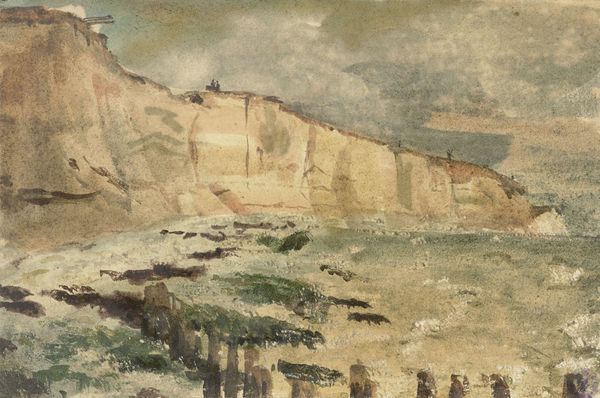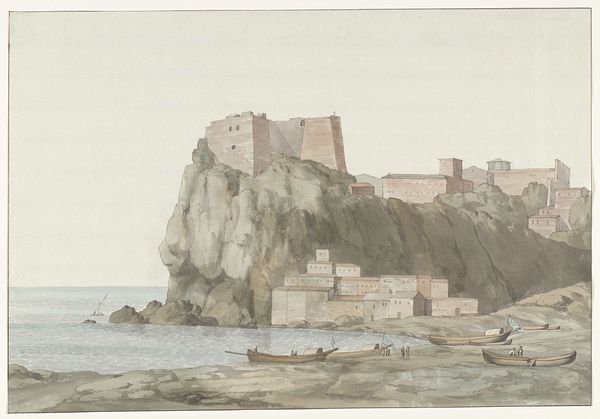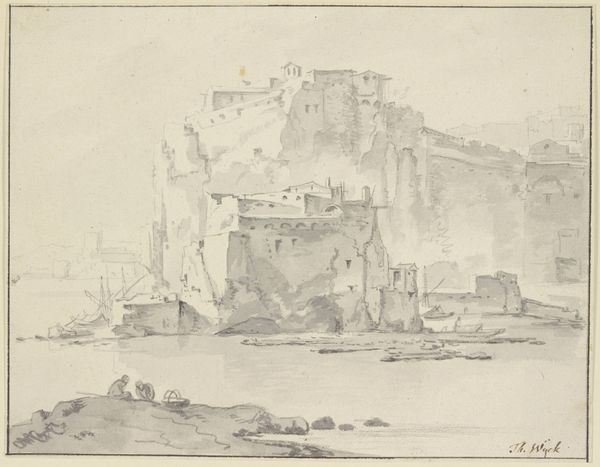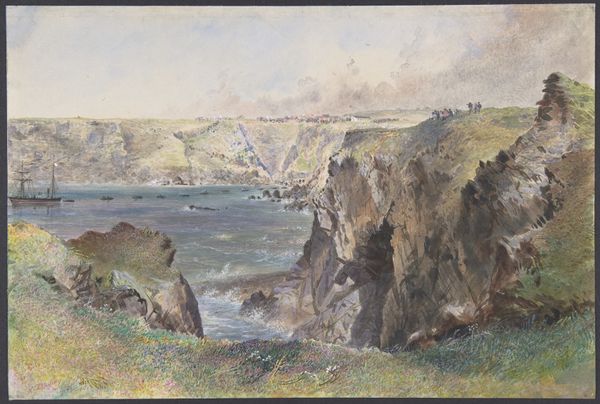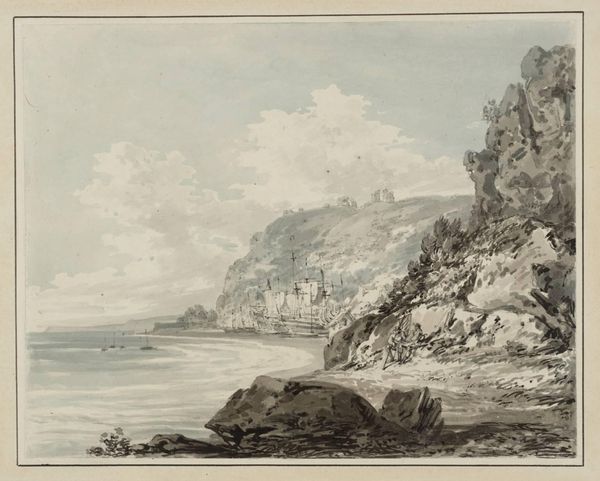
drawing, print, plein-air, watercolor
#
drawing
# print
#
plein-air
#
landscape
#
river
#
house
#
oil painting
#
watercolor
#
coloured pencil
#
romanticism
#
cityscape
#
watercolor
Dimensions: sheet: 10 1/4 x 13 11/16 in. (26.1 x 34.7 cm)
Copyright: Public Domain
Editor: So, this is Thomas Hartley Cromek's "Houses at Sorrento," made sometime between 1825 and 1873. It's a watercolor drawing, and it really strikes me as serene. The houses perched on the cliffs have such a dreamy quality. What do you see in this piece? Curator: I see a meditation on the enduring relationship between humanity and nature, rendered through carefully chosen symbols. The houses themselves, steadfast and geometric, speak to mankind’s aspiration for permanence. But notice how they cling to the cliffside – a precipice that represents not just physical danger, but the unpredictable force of the natural world. Does the artist use this to make a comment on the value of material posessions and achievements versus the more steady nature? Editor: That's interesting. I was just thinking about how picturesque it is, but you're making me consider the vulnerability of the buildings. What about the colors? They're very muted. Curator: Exactly! The muted palette is deliberate. It mutes our modern concept of paradise by highlighting emotional and cultural connections to the landscape that supersede idyllic natural scenes. The soft blues and greys perhaps suggest the ever-present potential for change and instability inherent in life, mirrored by the ocean's vastness. The cultural memory is not a fixed ideal but something mutable. Editor: So, it's less about capturing a pretty scene and more about the deeper connection between us and our surroundings, our sense of place. Curator: Precisely. Cromek asks us to consider what "home" truly means beyond mere shelter. Is it security, or is it our place in a world of flux? Look closely; even the largest looking stones nearest to us could move from under our feet with a large enough wave. The scene inspires awe. Editor: I definitely see that now. It makes me think about how we leave our mark on places, and how they, in turn, shape us. Curator: A reciprocal relationship, always in progress. A good, steady base, can even be transient. Editor: I learned a lot, the art isn't just reflecting life as we see it, but deeper cultural memory and meaning that is often not overtly addressed. Curator: Glad you are feeling enlightened! We could always go deeper in symbol hunting and its ties to the romantic style that the work embodies.
Comments
No comments
Be the first to comment and join the conversation on the ultimate creative platform.
